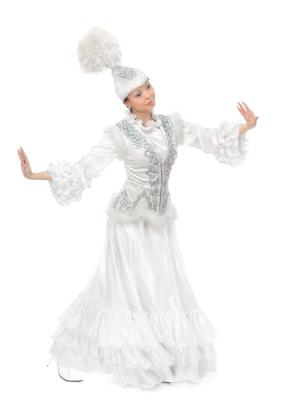
Chinese folk dances reach back into ancient times, rooted strongly in China's culture and history. From festival celebrations to ritualistic and religious ceremonies, the Chinese have cultivated a folk dance for many different times in life. A good number of these survive today, and are still being performed in China and around the world.
Chinese Folk Dances
Chinese folk dances almost always serve a specific goal - usually signifying a certain event in the life of the Chinese people. Known for their diverse choreography and brightly colored costumes, China is a nation with a long history of tradition and folklore. Dance fits naturally into Chinese culture, and you will find local dances for each ethnic group, as well as national dances that the majority of Chinese folk dancers know well.
Seasonal and Celebratory Dances
In Chinese dance, seasonal and celebratory dances include those that are categorized as self-entertainment, exercise, professionally dancing for a career, and displaying the Chinese culture for all to see. You will often see such dancing being performed at special events such as the Spring Festival in the Shangdong Province, as well as multiple regions around China. Other seasonal dances include the Umbrella, the Drum, and the Stick and Flower - all named after the props that are used in each dance. Seasonal dances vary from slow and graceful to sharp and powerful. The Umbrella dance steps are strong, yet very smooth in execution. The Stick and Flower is very light-hearted and lovely, and the Drum is bold and intimidating. These folk dances date back to the 1500s, when they were performed under Emperor Jiajing.
Other seasonal dances include the Farmer's Dance, which is usually danced by Koreans living in Northern China. It involves the use of tambourines and the movements are vigorous and full of poses that represent a farmer's life, such as people riding horses. Over 50-60 dancers participate in a Farmer's Dance, and it serves to bring awareness to the importance of agriculture in this region of China, as well as to provide entertainment to those living in farming villages.
Dances of Life
Chinese folk dances also portray life experiences expressed through movement. One example of this is the Axitiaoyue, which can be interpreted as "Dancing to the Moon." This dance was developed in the Yunnan Province, but it is popular in many regions of China. It is considered to be a favorite dance due to its joyful movement. Used as entertainment and celebration, dancers blow bamboo flutes and form a circle to perform synchronized arm swings and torso turns. This dance is known for getting a crowd's energy up and celebrating the best in life.
Another Yunnan Life Dance is the Bawangbian, which can be translated as "Rattle Stick Dance." This is a farmer's celebration of the first lunar month, and is also used at housewarmings, weddings, and other big events. It originates from the Qing Dynasty.
Finally, the Peacock Dance of the Dai People is performed at Chinese New Year and religious festivities. It is one of the most accurately preserved ancient dances of China. Performing the dance is considered a wish for good luck, and those who dance and observe are receiving good wishes for a life of happiness.
Work and Occupational Dances
As already noted, agriculture plays a large role in the life of many Chinese people. For this reason, there are special folk dances also performed by land workers themselves. One of these is the Thrush Neatening its Nest, which is found in the Anhui Province of China. The dance is performed in hopes of reaping a good harvest that year, and is usually danced during the time of year where weeds are pulled and replaced with seedlings. Thrushes are considered to be lucky birds to farmers, and the dance is named after their nesting instincts near farmland.
The Gutai Drum Platform Dance in the Hubei Province is performed while the earth is being prepared for planting and harvesting. The dance is usually performed by farmers that have some martial arts training, as the entire goal of the dance is to entertain and bring joy. The choreography is very easy to learn, and includes imitation of life objects from arrows to cats. Humorous to watch and fun to learn, it can be compared to a modern pantomime act.
Folk Dance Inspirations
These are only a few of the dances cherished and used regularly by the Chinese people. An exhaustive list of dances would be almost impossible to compile given the long history of dance in China, the sheer geographic size of China, and the many regional dances. What all these generations and regions have in common is that, at the heart of all folk dancing in China, are joy, creativity, and a vibrancy for all areas of life.







